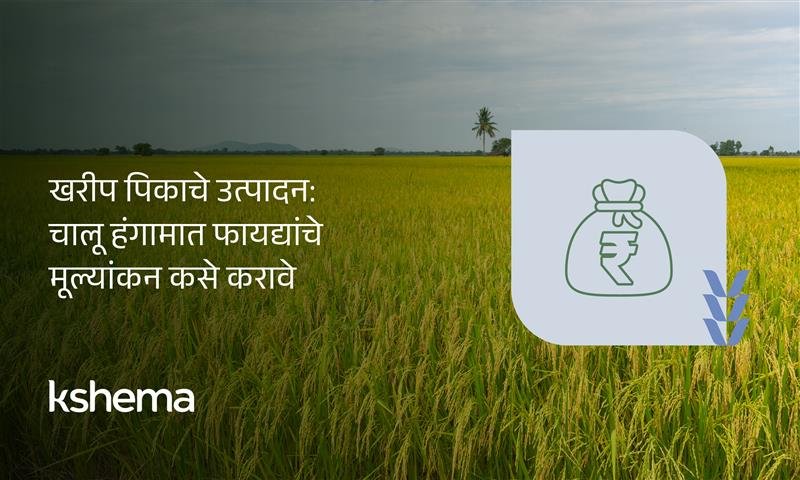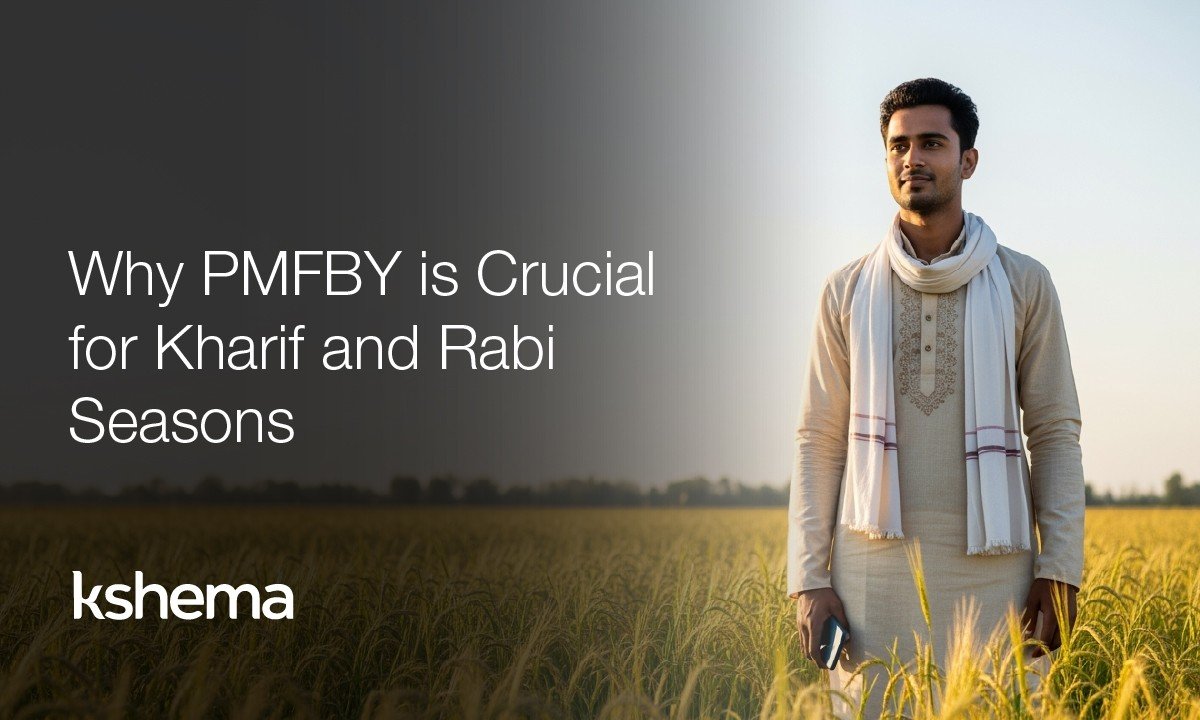Best Rabi Crops to Grow for Maximum Profit in 2025
Summary: Rabi crops like wheat, mustard, barley, peas and chickpea grow well in cool weather and require timely irrigation for good yield.
Once monsoon recedes and farmers have harvested their Kharif crops, they will set their sights on the Rabi season for cultivating crops that thrive in cooler temperatures and drier conditions. Should be the success of this season hinges on selecting the right Rabi crops, which not only promise high yields but also ensure profitability and food security.
In this blog, we explore the best Rabi crops based on yield potential, market demand, and government support. Whether you’re a seasoned farmer or an agri-entrepreneur, these five crops offer the best prospects for a successful harvest.
Tfhe success of this season hinges on selecting the right Rabi crops, which not only promise high yields but also ensure profitability and food security. Farmers must also consider climate change impact on Rabi crops when planning their crop strategy.
List of Best Rabi Crops
1. Wheat – The King of Rabi Crops
Wheat continues to reign supreme among Rabi crops, thanks to its high yield and strong government procurement support. With an MSP of INR 2,425 per quintal and a production cost of INR 1,182, wheat offers more than 100% profit margin, making it a reliable choice for farmers.
Key Highlights:
- Sowing Period: October–November
- Harvesting: March–April
- Ideal Regions: Punjab, Haryana, Uttar Pradesh, Madhya Pradesh
- Climate Needs: Cool temperatures (10–20°C) and moderate irrigation
Wheat is not just one of India’s major staple foods but also a pillar of India’s agricultural economy. Its adaptability to various soil types and consistent demand make it one of the best Rabi crops for maximum yield.
2. Mustard – The Oilseed Champion
Mustard is a high-value oilseed crop that thrives in the Rabi season. With an MSP of INR 5,950 and a production cost of INR 3,011, mustard offers a 98% profit margin, making it one of the most lucrative options for farmers.
Key Highlights:
- Sowing Period: October–November
- Harvesting: February–March
- Ideal Regions: Rajasthan, Haryana, Madhya Pradesh, Uttar Pradesh
- Climate Needs: Cool and dry conditions
Mustard is used extensively in Indian households. Its short growing cycle and low water requirement makes it ideal for regions with limited irrigation facilities.
3. Split Red Lentils (Masur) – The Soil-Enriching Pulse
Red lentils are gaining popularity among farmers due to their dual benefits: high market demand and soil enrichment. With an MSP of INR 6,700 and production cost of INR 3,537, lentils offer an 89% profit margin.
Key Highlights:
- Sowing Period: November
- Harvesting: March
- Ideal Regions: Uttar Pradesh, Madhya Pradesh, Bihar
- Climate Needs: Cool temperatures and well-drained soil
Lentils fix nitrogen in the soil, improving fertility for future crops. Their nutritional value and export potential make them one of the best Rabi crops for sustainable farming.
4. Barley – The Versatile Grain
Barley is a hardy crop that performs well in cooler climates and marginal soils. It’s used for food, animal feed, and malt production, making it a versatile choice for farmers.
Key Highlights:
- Sowing Period: October–November
- Harvesting: March
- Ideal Regions: Rajasthan, Uttar Pradesh, Haryana, Punjab
- Climate Needs: Cold and dry conditions
Barley requires less water and is resistant to many pests and diseases. Its growing demand in the brewing and livestock industries adds to its profitability.
5. Chickpeas (Gram) – The Protein Powerhouse
Chickpeas, also known as gram or chana, are staple pulses grown during the Rabi season. Rich in protein and fibre, they are in high demand both domestically and internationally.
Key Highlights:
- Sowing Period: November
- Harvesting: March
- Ideal Regions: Madhya Pradesh, Maharashtra, Rajasthan, Uttar Pradesh
- Climate Needs: Low temperature and dry weather
Chickpeas are drought-tolerant and require minimal inputs, making them well-suited for regions with limited irrigation, including many rainfed areas. Their ability to improve soil health and provide nutritional security makes them one of the best Rabi crops for small and marginal farmers.
Bonus Crop: Green Peas – A Profitable Vegetable Crop
While not a traditional large-scale crop, green peas are a profitable vegetable crop during the Rabi season. They mature quickly (60–70 days) and fetch premium prices in urban markets.
Farmer Tip:
- Use proper staking and spacing to maximise yield.
- Harvest early for better market rates.
Government Support & MSP Advantage
The Government of India plays a pivotal role in supporting Rabi crops through Minimum Support Prices (MSP), subsidies, and procurement schemes. Farmers are encouraged to:
- Use certified seeds for better yield
- Follow region-specific sowing calendars
- Utilise irrigation efficiently
- Adopt integrated pest management
These measures not only improve productivity but also ensure economic stability for farming households.
To further safeguard income, farmers should explore peril-based crop insurance options that provide targeted protection against weather-related risks.
Conclusion
The Rabi season offers a great opportunity for farmers to maximise yield and income. By choosing the best Rabi crops—wheat, mustard, lentils, barley, and chickpeas—farmers can ensure a successful harvest and contribute to India’s food security.
With favourable weather, improved seed varieties and government support, the 2025–26 Rabi season is poised to be one of the most productive yet. Strategic planning, timely sowing, and smart crop selection are the keys to unlocking maximum yield this winter.
Protect your Rabi crops with Kshema’s insurance plans.
Learn more: https://kshema.co/how-to-use-the-kshema-app-for-crop-insurance and secure your harvest today.
References
Frequently Asked Questions About Best Rabi Crops in India 2025
Q1. What are Rabi crops and when are they grown?
A. Rabi crops are winter-season crops sown after the monsoon (October–November) and harvested in spring (March–April). Popular examples include wheat, mustard, lentils, barley, and chickpeas.
Q2. When should farmers sow Rabi crops?
A. Generally between October and December.
Q3. Do Rabi crops require irrigation?
A. Yes, because winter receives very little rainfall.
Q4. Which are the best Rabi crops for high yield and profit in 2025?
A. Wheat, mustard, lentils (masur), barley, and chickpeas are the most profitable Rabi crops for 2025 due to strong market demand and government MSP support.
Q5. Which Rabi crop is most profitable for farmers?
A. Wheat remains the most profitable crop, followed by mustard and pulses, thanks to high demand and government procurement programs.
Q6. Which crop is ideal for winter?
A. Wheat and mustard are top winter-season crops.
Q7. Are Rabi crops covered under crop insurance plans?
A. Yes, Rabi crops are covered under PMFBY and Kshema’s customizable crop insurance plans, which protect farmers against weather-related losses.










